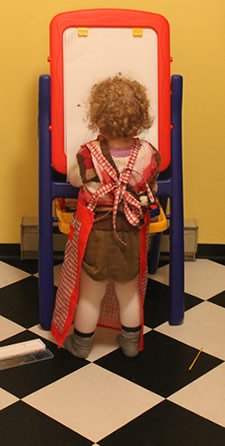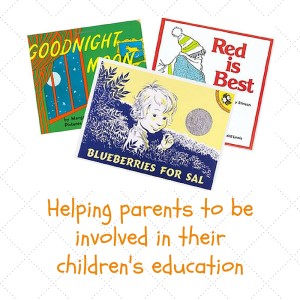Support parents or guardians by helping them recognize the important roles they play in modeling learning and thinking skills in their children.
Show them how children learn with concrete materials by referring them to a sample math lesson with manipulatives.
Keep parents and guardians informed of what’s going on in the classroom with an easy to read calendar and a monthly list of activities to post on the fridge.
Many parents are overwhelmed with work and after school commitments, so avoid sending home too many letters.
Provide parents who want to learn more about how young children learn with links to kindergarten-lessons.com to help them work with their child in certain subject areas.
Suggestions for parents who want to support their child’s learning at home…
1. Encourage parents to relax and keep home activities enjoyable. Avoid overdoing or doing any workbook type of activities. Children have years of these ahead of them. Turn learning activities into games. Say, “Let’s play a game”, not “Let’s practice your numbers”.
2. Make collections with your children. Collections are great as they can be sorted (big and small, dull and shiny, by color, shape…), arranged in rows (shortest to tallest), compared and counted.
Information and observations about the collections can be recorded in homemade booklets with pictures and any letter sounds the children know, such as bg rks, sl rks, for big rock small rocks.
3. Cook with children. Let children experience the differences between measuring a cup (or 250 ml) and half a cup of ingredients. Enrich their cooking vocabulary (mix, sift, whip, teaspoon…) with hands on experiences. Point out the first letter of the title of the recipe. This is the letter c, it’s sound is c, the title says, cupcakes. For a complete list of why cooking with children is a great thing, go here…
4. Present problem solving opportunities. “If everyone in the family gets 2 cookies for a snack, how many cookies do we need?” Allow plenty of time for the child to think and to actually count out two cookies for each person. Encourage different ways to solve a problem. “That’s good thinking. Can you think of other ways to solve the problem?”
5. Play counting games on the way to and from school. For example, “Let’s count stop signs. How far can we count before we get to _______ (school, the dentist, etc.)? Let’s count backwards from 5.”
6. Play alphabet games. Play alphabet board games, ABC bingo, word bingo, and other simple games such as, “I Spy”, using objects that begin with a specific letter sound. Solve ABC riddles – I’m thinking of something that starts with the sound, “Mmm” and you can eat it (say the sound of the letter, not what the letter is called).
7. Read lots of picture books, fiction and nonfiction to your children. Encourage them to retell a story, recall events from a story or act out parts of a story. Be enthusiastic about representing your favorite parts of the story by drawing pictures or by making characters with modeling clay and your children will soon join in.
8. Read ABC, rhyming and pattern books. In addition to reading favorite story and nonfiction books, read simple pattern books (the dog goes to town, the sheep goes to town…), ABC books, rhyming books, concept books (shapes, opposites) and books that refer to numbers and contain math vocabulary. Rereading books reinforces concepts.
9. Encourage your child to notice letters, words and numbers in posters, books, signs and magazines. Play games with supermarket flyers. Let’s circle all the number “5s”. Let’s count how many times we can find “w” on this page or the word “exit” as we walk through the mall. Paint letters on a large easel.
10. Play board and card games. Relax and give your child plenty of time to count the numbers on the dice and to move his/her game piece around the board. Avoid the temptation to quickly sum up the dice and tell your child what square to go to. Use two dice when one is too easy.
11. Count money. Give your child a bag of money to sort, count and stack into piles. Slowly introduce counting by 2s, 5s, and 10s. As your child is confident with one coin add nickels, dimes and quarters.
12. Use math vocabulary at home. Include words like more than, fewer than, rectangle, triangle, square, circle, add, subtract, share, divide, first, second, third, fourth, fifth, and equal in your every day speech. E.g. “Let’s fold the napkins into triangles. Give me fewer potatoes than Dad. Give Mum the first cookie, give Dad the second cookie, and give _ the third cookie. Divide the crackers between your friends.” Visit teach math vocabulary for a complete vocabulary list…
13. Start preparing your child to be responsible for homework. To help your child get used to a homework schedule, plan the same time and place each day to spend time doing sit down type of activities with your child. Turn the television and other electronic games off, clear distracting toys away, and bring out puzzles, games or drawing supplies. Schedule part of the time to do activities together and a shorter amount of time for your child to work independently.
14. Go to the math pages on kindergarten-lessons.com for simple math games to play with your child.
Printable version of, Support parents, available here…
Many government sites have additional free print outs that support parents who want to be involved in their children’s learning.
